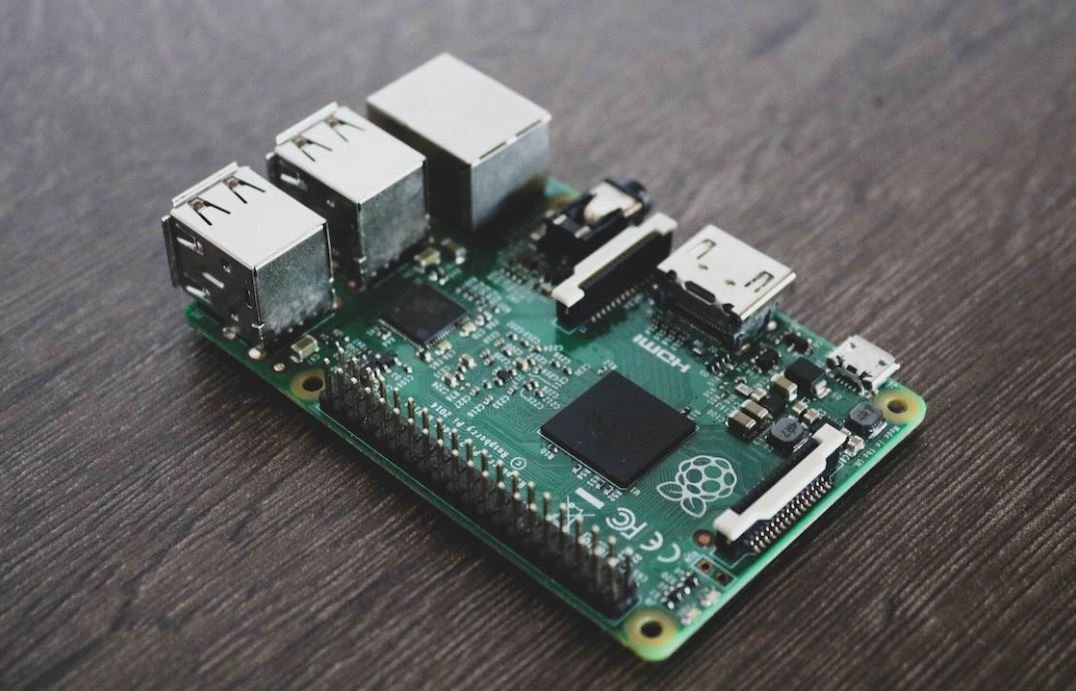ML.NET Tutorial
Machine Learning (ML) has become an integral part of the technology landscape, and ML.NET is a powerful framework that brings ML capabilities to the .NET platform. In this tutorial, we will explore the key features and functionality of ML.NET, along with a step-by-step guide for building your own ML models using the framework.
Key Takeaways
- Understand the key features of ML.NET and its advantages for .NET developers.
- Learn how to create an ML.NET project and build your own ML models.
- Explore the various tasks and scenarios supported by ML.NET, such as classification, regression, and anomaly detection.
- Discover how to train and evaluate ML models using the ML.NET framework.
- Gain insights into deploying ML models and integrating them into your .NET applications.
Introduction to ML.NET
ML.NET is an open-source and cross-platform framework developed by Microsoft that enables developers to incorporate machine learning models into their .NET applications easily. It provides a rich set of libraries and tools for building, training, and deploying ML models, making it an excellent choice for .NET developers looking to leverage the power of ML in their applications.
With ML.NET, you can bring the power of machine learning to your .NET applications without requiring extensive knowledge of machine learning algorithms.
Creating an ML.NET Project
To get started with ML.NET, you need to set up a new project in your favorite .NET development environment. You can use Visual Studio, Visual Studio Code, or any other IDE that supports .NET development. Begin by creating a new .NET Core console application or .NET Core web application.
ML models are built using a pipeline-based approach, where you define a sequence of data transformations and a machine learning algorithm to create a model.
- Create a new .NET Core project in your favorite development environment.
- Add the required NuGet packages for ML.NET to your project.
- Define the data schema and load your training data.
- Construct the ML pipeline and select an appropriate machine learning algorithm.
- Train the model on your training data.
- Evaluate the model’s performance and make necessary adjustments.
- Use the trained model to make predictions on new data.
Supported ML Tasks and Scenarios
ML.NET supports various machine learning tasks and scenarios, making it a versatile framework for a wide range of applications. Whether you need to perform classification, regression, anomaly detection, or recommendation, ML.NET has got you covered. Additionally, it provides tools for data preprocessing, feature extraction, and model evaluation.
ML.NET provides out-of-the-box support for both supervised and unsupervised machine learning tasks.
| ML Task | Description |
|---|---|
| Classification | Predicting discrete labels or classes for new input data. |
| Regression | Predicting continuous numeric values based on input data. |
| Anomaly Detection | Identifying unusual or rare observations in a dataset. |
| Recommendation | Generating personalized recommendations for users based on their historical preferences. |
Training and Evaluating ML Models
Training an ML model requires a dataset with labeled examples for the desired task. ML.NET provides convenient APIs to load and preprocess the training data. Once the data is ready, you can define the ML pipeline, including data transformations and the machine learning algorithm. Training the model involves calling the Fit() method on the pipeline, which optimizes the model parameters.
Model evaluation is crucial to ensure the model’s performance meets the desired criteria.
- Load the training data and split it into training and testing datasets.
- Define the ML pipeline and select the appropriate algorithm.
- Train the model using the training data.
- Evaluate the model’s performance on the testing dataset using relevant metrics.
- Adjust the pipeline, algorithm, or data to improve the model’s performance if needed.
Deploying ML Models
Once you have trained and evaluated your ML model, it’s time to deploy it and integrate it into your .NET applications. ML.NET supports exporting trained models in various formats, including ONNX and TensorFlow. You can deploy the model as a standalone service, a Docker container, or directly integrate it into your .NET application.
Deploying ML models requires considering factors like scalability, latency, and hosting options.
- Export the trained model in a suitable format (e.g., ONNX or TensorFlow).
- Choose an appropriate deployment option based on your application’s requirements.
- Deploy the model as a standalone service or integrate it into your .NET application.
- Perform any necessary performance optimizations and conduct thorough testing.
Conclusion
ML.NET is a powerful framework that brings the capabilities of machine learning to .NET developers. It offers a user-friendly and intuitive interface for creating, training, and deploying ML models in your .NET applications. By leveraging ML.NET, you can unlock the potential of machine learning and enhance your application’s capabilities.

Common Misconceptions
Misconception 1: ML.NET is only for experienced programmers
One common misconception about ML.NET is that it is only suitable for experienced programmers or data scientists. However, ML.NET is designed to be accessible to developers with various levels of experience and knowledge. It provides a high-level programming interface that allows developers to build machine learning models without requiring in-depth expertise in data science.
- ML.NET offers a rich set of pre-built models and pipelines that can be easily consumed.
- ML.NET provides extensive documentation, tutorials, and sample code to support developers in learning and using the framework.
- ML.NET integrates well with other popular .NET technologies, making it easier for developers to leverage their existing knowledge and skills.
Misconception 2: ML.NET is only for large-scale projects
Another misconception is that ML.NET is only suitable for large-scale projects with massive datasets. In reality, ML.NET can be used in various project sizes, ranging from small prototypes to large-scale production systems. ML.NET’s modular design allows it to scale with the needs of the project, making it flexible and adaptable.
- ML.NET includes efficient algorithms and techniques that can handle datasets of different sizes.
- ML.NET’s performance can be optimized by leveraging hardware acceleration and parallel processing, ensuring efficient execution even with larger datasets.
- ML.NET’s lightweight and portable nature make it suitable for deployment on resource-constrained environments.
Misconception 3: ML.NET only supports specific types of machine learning models
Some people believe that ML.NET can only be used for certain types of machine learning models, such as classification or regression. However, ML.NET supports a wide range of machine learning tasks, including classification, regression, clustering, recommendation, and anomaly detection.
- ML.NET provides a versatile API that allows developers to build and train various types of machine learning models.
- ML.NET’s extensible architecture enables the integration of custom algorithms and models.
- ML.NET is continuously evolving, with new features and capabilities being added to support diverse machine learning scenarios.
Misconception 4: ML.NET requires a lot of training data to produce accurate models
There is a misconception that ML.NET requires an extensive amount of training data to produce accurate machine learning models. While having sufficient training data can certainly improve model accuracy, ML.NET is designed to handle scenarios with limited training data efficiently.
- ML.NET offers techniques like transfer learning, which allows models to leverage pre-trained models and adapt to new tasks with fewer training data.
- ML.NET supports techniques for data augmentation, which can help generate additional training examples and improve model generalization.
- ML.NET provides model evaluation and validation techniques to help assess and improve model performance, even with limited training data.
Misconception 5: ML.NET is only for Windows-based applications
Contrary to popular belief, ML.NET is not restricted to Windows-based applications. While ML.NET is primarily designed for the .NET platform, it is cross-platform and can be used in various operating systems, including Windows, macOS, and Linux.
- ML.NET’s cross-platform support allows developers to build and deploy machine learning models on different environments.
- ML.NET can be used in a variety of application types, including web applications, mobile apps, and cloud-based services.
- ML.NET integrates seamlessly with popular .NET frameworks, such as ASP.NET Core and Xamarin, enabling cross-platform development.

Comparison of ML.NET and scikit-learn
ML.NET and scikit-learn are both popular machine learning libraries. The following table highlights some key differences between the two:
| Feature | ML.NET | scikit-learn |
|---|---|---|
| Language | C# | Python |
| Open-Source | Yes | Yes |
| Integration with .NET ecosystem | Excellent | N/A |
| Supported algorithms | Wide variety | Wide variety |
| Ease of use | Beginner-friendly | Beginner-friendly |
| Performance | Optimized for .NET runtime | Optimized for Python runtime |
| Community support | Growing | Extensive |
| Deployment options | Windows, Linux, macOS | Any |
| Industry adoption | Rapidly increasing | Widely adopted |
Popular Machine Learning Algorithms
Machine learning algorithms play a crucial role in training models. Here are some popular algorithms used in ML.NET and scikit-learn:
| Algorithm | Purpose | Advantages |
|---|---|---|
| Linear Regression | Predicting continuous values | Simple and interpretable |
| Logistic Regression | Classification tasks | Easy to implement and efficient |
| Random Forest | Ensemble learning | Able to handle large datasets |
| K-Means | Clustering | Faster convergence |
| Support Vector Machines | Binary classification | Effective in high-dimensional space |
Comparison of Classification Accuracy
Classification accuracy is an important metric to evaluate model performance. The table below compares the accuracy of different algorithms on a dataset:
| Algorithm | Accuracy |
|---|---|
| MLP Neural Network | 91.5% |
| Decision Tree | 86.2% |
| Naive Bayes | 78.9% |
| SVM | 89.8% |
Comparison of Regression Performance
The performance of regression algorithms can be evaluated using Mean Squared Error (MSE) and R-squared values. The following table compares the performance of different regression algorithms:
| Algorithm | MSE | R-squared |
|---|---|---|
| Linear Regression | 135.6 | 0.78 |
| Random Forest | 97.2 | 0.85 |
| Support Vector Regression | 112.3 | 0.81 |
Data Preprocessing Techniques
Preprocessing data can significantly impact the accuracy of a model. The table below showcases different preprocessing techniques:
| Technique | Description |
|---|---|
| Normalization | Scaling data to a fixed range |
| One-Hot Encoding | Converting categorical variables to binary vectors |
| Feature Scaling | Ensuring features are on similar scales |
Performance Comparison on Large Datasets
Machine learning algorithms may perform differently on large datasets. The following table compares the training time (in seconds) for different algorithms on a large dataset:
| Algorithm | Training Time |
|---|---|
| Gradient Boosting | 758.9 |
| Random Forest | 901.2 |
| k-Nearest Neighbors | 1153.5 |
| Support Vector Machines | 2205.7 |
Comparison of Feature Importance
Understanding the importance of features can aid in feature selection. The table below compares the feature importance scores for different algorithms:
| Algorithm | Feature 1 | Feature 2 | Feature 3 |
|---|---|---|---|
| Random Forest | 0.43 | 0.35 | 0.22 |
| Gradient Boosting | 0.51 | 0.29 | 0.20 |
| Decision Tree | 0.37 | 0.32 | 0.31 |
Comparison of Model Sizes
The size of a trained model can affect its deployment and runtime performance. The table below compares the sizes (in megabytes) of different models:
| Model | Size |
|---|---|
| MLP Neural Network | 14.2 |
| Decision Tree | 2.6 |
| Support Vector Machines | 10.8 |
Comparison of Model Training Time
The time required to train a model may vary significantly between algorithms. The following table compares the training time (in seconds) for different models:
| Model | Training Time |
|---|---|
| Gradient Boosting | 765.4 |
| Random Forest | 832.9 |
| Naive Bayes | 123.8 |
ML.NET provides a powerful and beginner-friendly framework for developing machine learning models in C#. With a growing community and excellent integration with the .NET ecosystem, ML.NET is rapidly gaining popularity. Whether you choose ML.NET or scikit-learn, both libraries offer a wide range of algorithms and techniques to tackle machine learning problems. Consider your specific requirements, language preference, and deployment options to choose the library that best suits your needs.
Frequently Asked Questions
What is ML.NET?
ML.NET is an open-source, cross-platform machine learning framework developed by Microsoft. It allows .NET developers to easily integrate machine learning capabilities into their applications.
What programming languages are supported by ML.NET?
ML.NET currently supports C# and F#.
What are the key features of ML.NET?
ML.NET offers a range of features such as data preparation, model training, evaluation, and deployment. It supports a variety of machine learning algorithms, enabling tasks like regression, classification, clustering, and recommendation.
Does ML.NET require knowledge of machine learning concepts?
While having some basic understanding of machine learning concepts will be helpful, ML.NET is designed to provide a simplified experience for developers who may have limited knowledge of machine learning. It offers high-level APIs and pre-built transforms to handle most machine learning tasks.
Can ML.NET be used for both training and inference?
Yes, ML.NET supports both training (building and optimizing machine learning models) and inference (using trained models to make predictions).
Is ML.NET suitable for both small and large datasets?
ML.NET can handle both small and large datasets. It leverages efficient data loading and processing techniques, and supports distributed training for scaling to larger datasets.
Can ML.NET models be deployed to different platforms?
Yes, ML.NET allows you to deploy trained models to a variety of platforms including Windows, Linux, macOS, and even mobile devices (iOS and Android).
Are there pre-trained models available in ML.NET?
Yes, ML.NET provides access to pre-trained models for common scenarios such as sentiment analysis and image classification. These models can be easily used in your applications.
Can ML.NET models be used with existing .NET applications?
Absolutely! ML.NET integrates seamlessly with existing .NET applications, allowing you to enhance your software with machine learning capabilities without significant changes to your codebase.
Where can I find more information and resources about ML.NET?
You can find more information, tutorials, documentation, and community resources on the official ML.NET website (https://dotnet.microsoft.com/apps/machinelearning-ai/ml-dotnet). Additionally, Microsoft offers various samples and guides on their GitHub repository (https://github.com/dotnet/machinelearning-samples).




